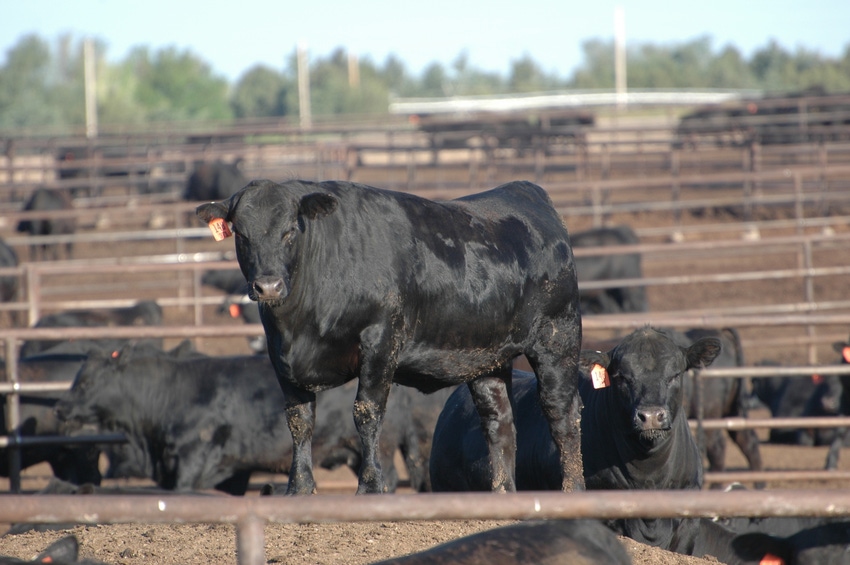Stocker ID update
Along with disease traceability and livestock management, a national system of individual animal identification, tied to title, could offer financial protection.
February 27, 2019

Sponsored Content
“If I have data, then I can evaluate my decisions. I wanted the data so that once I had paid my tuition in the business, I could use it and not have to keep paying tuition,” says Jay O’Brien of Amarillo, the 2013 National Beef Stocker Award winner.
“Knowing how a source’s cattle performed the last time I owned them enables me to buy better performing cattle.” He owns a ranch in Texas and manages others in Texas, Oklahoma, New Mexico and Colorado.
“Identification (ID) would make it easy for all producers to get data on how their cattle performed in the packing plant,” O’Brien says. “The American Angus Association proved how data could improve a whole breed. This sort of data could allow all producers to focus on performance measures.”
Knowing rather than guessing is one reason O’Brien has long used individual animal identification and individual animal data to manage cows and stockers. It’s also why he taught himself to write ranch management software in the mid-1970s, wanting to go beyond cash accounting to analyze profit.
What’s the best approach?
O’Brien is a longtime advocate of mandatory national cattle identification and traceability for the purposes of animal disease identification and management.
“The good news is that the vast majority of producers agree that we need an all-encompassing ID and traceability system. The threat of losing foreign markets may be the main driver, but management advantages are the main benefit,” O’Brien says.
For those opposed to a standardized national system due to liability concerns, O’Brien says, “What would scare me worse than finding out I had a disease problem on my ranch would be having a disease problem that I didn’t know about.”
O’Brien also sees other opportunities rarely cited in the ongoing debate. For one thing, he believes such a system offers financial protection to producers.
“If ID were mandatory at the point of first transfer, it could be connected to ownership like a Vehicle Identification Number for a pickup or tractor,” O’Brien explains. “A lien could be placed against it. When you sold the cattle, the lien would have to be paid before ownership could change. No one could double-mortgage cattle; buyers would have to pay off the original owner.
“Title tied to ID would have prevented the financial losses by producers who became victims of the Eastern Livestock Company, LLC fraud a few years back and too many others since then.”
In the same way, O’Brien believes mandatory ID and traceability would provide an impediment against livestock theft.
USDA emphasizes ID commitment
USDA and some parts of the cattle and beef industries are working to achieve consensus for building upon the current mandatory Animal Disease Traceability (ADT) program. Currently, that program requires ID for cattle 18 months and older that enter commerce across state lines, unless otherwise exempted.
There is no requirement for the lion’s share of cattle—calves and feeder cattle flowing to feedyards from ranches and stocker operations—that would need to be identified and tracked in the case of a virulent animal disease outbreak, such as foot and mouth.
Even with cattle covered by the current ADT, there’s no requirement for origin and movement information that would enable the 48-hour traceability envisioned when the ID debate began a couple of decades ago.
For its part, USDA seems genuinely sincere about wanting the industry to come up with a plan to ultimately fill in the gaps. At the same time, they appear firm in their commitment to seeing those gaps filled one way or the other.
“The consumer wants traceability. They want to know more about where their food comes from. They’re asking those questions, and we’ll fail if we’re not able to answer their questions,” said Greg Ibach, under secretary for the USDA’s marketing and regulatory programs, during a recent meeting of the National Cattlemen’s Beef Association Animal Health and Well Being committee.
In providing an update, Ibach noted animal identification and traceability in the beef industry is at about the same place it was when industry and government began discussions 20 years ago.
“We have to keep making progress,” Ibach said. “If we keep treading water, we’ll stay in the same place. Maybe it’s the role of USDA to set the goals for us to reach so we can keep moving forward on animal disease traceability.”
When asked about USDA’s specific timeframe for retiring metal brite tags—currently paid for by the government—as a means of official identification, Ibach emphasized, “We’re happy to have those conversations, but it is our role to continue to push this forward.”
O’Brien has advocated individual cattle identification and traceability since 1990. He championed it when he was president of the Texas Cattle Feeders Association, an organization that continues to support a mandatory ID program.
“I don’t see a downside to it and the upside is monstrous,” O’Brien says. “Mandatory ID would offer so many benefits. Producers recognize the need for national ID.
“It is now time for associations to quit studying and quickly establish standards for an ID system. USDA could be persuaded to foot part of the expense of the tags if they could see the industry recommending an efficient system.”
About the Author(s)
You May Also Like




.png?width=300&auto=webp&quality=80&disable=upscale)
